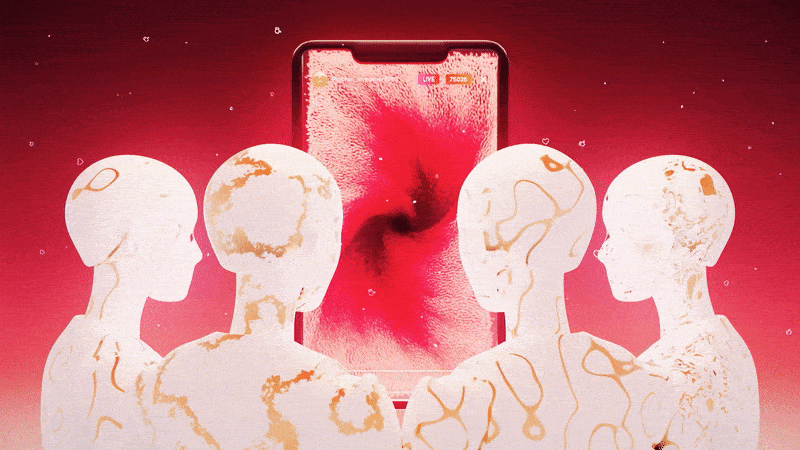%3Ablur(5)&w=3840&q=75)

The future of shopping is agentic
With Shopify and OpenAI bringing commerce into ChatGPT, discovery, decision, and purchase collapse into a single exchange of words.
— Insights, opinions, news, and experiments from our people, clients, and collaborators.
%3Ablur(5)&w=3840&q=75)

With Shopify and OpenAI bringing commerce into ChatGPT, discovery, decision, and purchase collapse into a single exchange of words.
%3Ablur(5)&w=3840&q=75)

A straightforward look at how Your Majesty prices its work, from fixed project fees to retainers and productized services.
%3Ablur(5)&w=3840&q=75)

A practical lens built from the studio floor to help navigate the shift from designing to directing through four dimensions: Zing, Empathy, Stretch and Taste.
%3Ablur(5)&w=3840&q=75)

Legacy platforms slow brands down. MACH architecture unlocks speed, flexibility, and scalability. Here’s why we apply it to build digital platforms that last.
%3Ablur(5)&w=3840&q=75)

Listen to our conversation with Constantine Gavrykov, Sr Director of Digital Products at Decathlon.
%3Ablur(5)&w=3840&q=75)

Join 5000+ creatives, makers, and marketers who receive our beloved newsletter covering all things tech, design, and wonderful internet culture.
%3Ablur(5)&w=3840&q=75)

Listen to our interview with Ivan Burazin, CEO of Daytona AI.
%3Ablur(5)&w=3840&q=75)

Amsterdam’s award-winning agency joins Infinum, forming a 400-person global team to craft exceptional digital experiences at scale.
%3Ablur(5)&w=3840&q=75)

Insights for individuals and organizations seeking to understand the dynamics of hype, make informed decisions amidst the frenzy, and harness its potential for positive change.
%3Ablur(5)&w=3840&q=75)

Insights for brands who aspire to be at the forefront of culture, connecting authentically with their customers and maximising the value of technology.
%3Ablur(5)&w=3840&q=75)

Capturing modern spirituality and non-conformity to celebrate the unusual.
%3Ablur(5)&w=1080&q=75)

Challenges and the subsequent opportunities for luxury brands, scaling in the digital age.
%3Ablur(5)&w=3840&q=75)

Our first impressions of the tech giant’s latest bet: Spatial Computing.
%3Ablur(5)&w=3840&q=75)

Five research-led strategic pointers for brand strategists, marketers and designers.
%3Ablur(5)&w=3840&q=75)

An exploration into the evolving role of AI in art — challenges, curation and, discerning creativity.
%3Ablur(5)&w=3840&q=75)

A narration of the many lessons we can learn from Gen Z—the people, not the consumers.
%3Ablur(5)&w=3840&q=75)

CSR reporting will be mandated in the EU, for brands it’s an opportunity to leap ahead.
%3Ablur(5)&w=3840&q=75)

Insights and trends to help brands navigate the ever-evolving digital landscape.
%3Ablur(5)&w=1920&q=75)

Is algorithmic commerce flattening culture and removing human agency?
%3Ablur(5)&w=3840&q=75)

A deep dive into the five entwined relationships embedded within the Metaverse.
%3Ablur(5)&w=3840&q=75)

An exploration into our relationship with technology, its positive power and its potential to be abused.
%3Ablur(5)&w=1920&q=75)

How can we stop overconsumption if we’re not confronting our own waste?
%3Ablur(5)&w=1920&q=75)

An exploration into the pairing of manifesting ideology with labor-masking technology, like next-day delivery.
%3Ablur(5)&w=1920&q=75)

Is the commerce ecosystem reducing creativity and community to pure monetization?
%3Ablur(5)&w=1920&q=75)

We investigate the financial rewards that come to those who broadcast, everything.
%3Ablur(5)&w=3840&q=75)

Exploring the role of AI in art, it's evolution over the years and why now you should be taking it seriously.
%3Ablur(5)&w=3840&q=75)

Here's how you and your team can get started with AI today.
%3Ablur(5)&w=3840&q=75)

A recap of five strategic themes we garnered during our research effort for fashion-tech clients.
%3Ablur(5)&w=3840&q=75)

Keep in mind these four things when designing digital experiences for real and virtual worlds.
%3Ablur(5)&w=3840&q=75)

Why the success of today’s "metaverse" platforms lies in the skills of the big game studios.
%3Ablur(5)&w=3840&q=75)

We outline the opportunities, potential limitations, and considerations of digital fashion’s future.